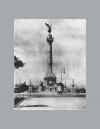Abstract
In Mexico the beginning of the independence century coincides with the end of three decades of General Porfirio Diaz presidency. Although the Mexican revolution, it was a wealthy and peaceful period. This condition of wealth brought along a construction peak reflected on different fields of the country in both architectures: religious and public. This official architecture favoured each and all government, health, and security buildings. These constructions were presented by the presidency to the foreign dignitaries as part of the centenary festivities along a series of monuments opened days near the 16th of September 1910 (official date of the festivity) just for the celebration. It's interesting appreciate how the principals buildings were trusted to the foreign architects- a common costume at that time- leaving the less important constructions to de local architects. This condition marks the beginning of a national tendency by the Mexican architects both in their works and writings.Apuntes is registered under a Creative Commons Attribution 4.0 International Public License. Thus, this work may be reproduced, distributed, and publicly shared in digital format, as long as the names of the authors and Pontificia Universidad Javeriana are acknowledged. Others are allowed to quote, adapt, transform, auto-archive, republish, and create based on this material, for any purpose (even commercial ones), provided the authorship is duly acknowledged, a link to the original work is provided, and it is specified if changes have been made. Pontificia Universidad Javeriana does not hold the rights of published works and the authors are solely responsible for the contents of their works; they keep the moral, intellectual, privacy, and publicity rights.
Approving the intervention of the work (review, copy-editing, translation, layout) and the following outreach, are granted through an use license and not through an assignment of rights. This means the journal and Pontificia Universidad Javeriana cannot be held responsible for any ethical malpractice by the authors. As a consequence of the protection granted by the use license, the journal is not required to publish recantations or modify information already published, unless the errata stems from the editorial management process. Publishing contents in this journal does not generate royalties for contributors.


